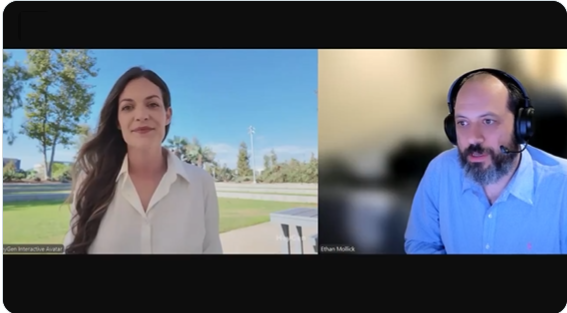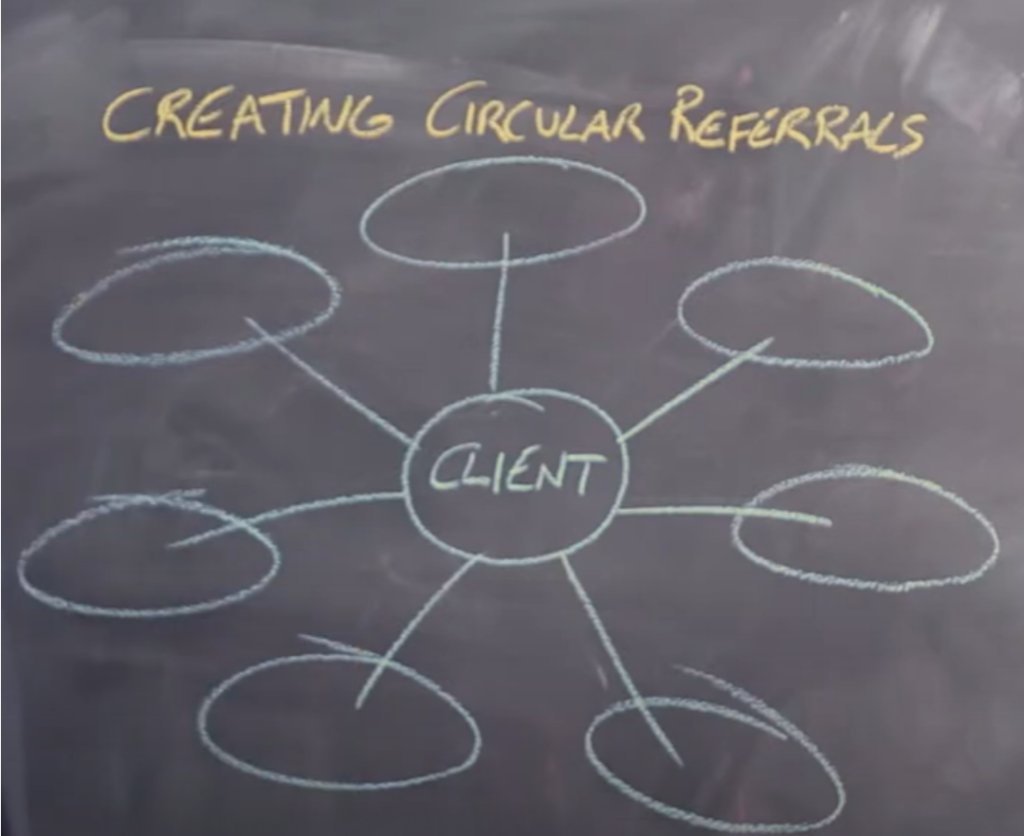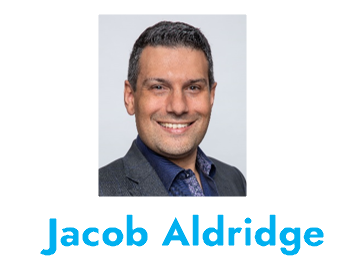Which is Worse: Synergy or Microsoft Teams?
When I began creating my Blackboard Fridays business video series I thought the most popular topics would be the million dollar growth ideas. Yeah, nah.
Even in small business, it turns out the greatest pain (and most in demand episodes) are about MEETINGS and how horrible they are.
So Can Meetings Be Better?
Of course they can! But where’s the Friday Fun in that?
So before we make them better (see below), first we must ask … Can Meetings Get Any Worse?
So, I want to hear your opinion. Which of these two meetings do you think is worse?

Candidate A
Comes from the meeting mentor par excellence, Dr Carrie Goucher.
Read Carrie’s step-by-step guide “How to run the worst meeting in the world” … and see if you recognise yourself too much.
(If you do, you must subscribe to Carrie’s excellent Fewer Faster Bolder emails.)
Candidate B
Pushes the AI boundary with Ethan Mollick, author of “Co-Intelligence”.
Ethan invited a live, AI avatar to a Zoom meeting… and asked her to run the most stereotypical meeting ever.
In case it’s not obvious, the deliberately terrible AI person is on the left…

Real talk friends: I think I’ve sat through both of those meetings IRL more than a dozen times.
Surely, hopefully, that means the only way is up.
If so, perhaps it starts with “How to Set Better Meeting Agendas”…
Blackboard Fridays Episode #89 – How to Set Better Meeting Agendas
Here’s a question I was specifically asked to address. (Side note: If you’ve ever got any questions that you want answered or specific pain points in your business, please do send me an email, and we’ll cover it in a Blackboard Fridays episode.)

This question was how to set better agendas for the meetings that I’m running with my team. Now, you may recognize this diagram here on the left. This is from episode 28, it’s the momentum meeting process. It’s designed to help you run more efficient, more energized meetings to get much better outcomes as a result.
Start Strong with a Clear Agenda
It starts with the agenda. I’ll also draw the analogy to the gratitude sales model, which has the agenda as the very first step. Setting a clear agenda at the outset of a meeting is the number one tool that is going to create better meetings and better outcomes for you. So how do you do it?
Well, I like to think about different agenda items across a couple of these different either-or conversations. So for each agenda item, (and you can have this list if you’re chairing a meeting to have a look), ask yourself is this item a big picture or a specific item.
Is this a discussion that we need to have? Or is this a decision that we need to make? Is this a thinking analytical task for the agenda or is this more of a feeling? Are people going to be sharing how they feel about a topic? And is this about asking the group in the meeting what they think or feel or is this about telling them something?

Get clear on those and start grouping your agenda items into some of those different categories. Where a lot of meetings go wrong is when they bounce around. We have this big feeling conversation because I ask a question and then we jump into a thinking one that’s quite analytical and then back to a feeling.
Or worse still, we don’t have clarity between some of these distinctions. I’m running the meeting and I want a decision, but everyone else thinks we’re just here to have a chat and have a nice discussion, so they go down that path and I leave the meeting feeling unsatisfied. If you’re not clear when somebody puts an item on the agenda about where it fits into those, ask the follow-up question.
What Happens When Agendas Aren’t Clear
Where do I see meetings go wrong as a result of the agenda? Often, there’s too much big picture discussion without enough specifics or decisions made. It’s a nice chat, but nothing actually gets resolved. You end up having those meetings to plan meetings to have another meeting because nothing actually comes out of the meeting that you set.
Get to specifics, ask a question and I’ve even said in the past that having a question mark agenda where every item has to end in a question, is a great way to make sure that you do get solutions and agreements when you’re going through the process.
Order Matters: Set Your Agenda Flow
I also see meetings go bad when you discuss things too early. The first one or two things get on the agenda and then the conversation just flows. The most important topic in a meeting may not be the first thing that people think of.
Make sure as the chair of that meeting that you’re holding off. What else do you want to cover today? Let’s get the whole agenda out before we start moving into discussing some of the specifics. You may not be able to cover everything, but at least you’ll cover the most important aspects.
The Benefits of Recurring Agendas
For recurring appointments and meetings, it’s great to have a fixed agenda, something that recurs along with the meeting. So this for instance might be a meeting with your marketing team where once a month you sit down and talk about what you’re doing from a marketing strategy perspective and that’s going to touch on a lot of the same points month after month.

You still want to do the check in to see what else is there but by having a recurring agenda, people come prepared. Even for non-recurring meetings, having a team come prepared makes the actual meeting process so much more valuable and more efficient.
Whether you’re sending out a specific agenda or just a topic for the meeting and running the agenda at the start, explaining to people what they can expect from the meeting, what outcomes you’re looking for (or the meeting host is looking for) can ensure that they come prepared.
Meeting or Email?
Frankly, if you’re running a meeting just to tell, just to give information, that could probably be covered in an email. Blaming meetings for loss of productivity, reminds me of a joke I’ve used before which is ‘like blaming spoons for all of that ice cream that makes me fat’. They’re a great tool when they’re used well. And it comes back to the very beginning.
Set clear agendas, get everything out, categorize it to make the conversation more efficient. And for the love of God, get to some solutions and agreements, confirm the actions at the end and take your team out of the meeting knowing that they’ve moved the business forward as a result.
With Love,
Jacob Aldridge
International Business Advisor
WhatsApp +61 427 151 181




